


Freedom Trail Walking Tour
View PhotosFreedom Trail Walking Tour
Difficulty Rating:
The best walk in Boston for history lovers, The Freedom Trail is one of Boston’s most popular walks. Follow the painted red line on the ground throughout this historic Boston walking tour and see the sites that were most instrumental in the American Revolution.
Getting there
To begin this walking tour through Boston’s history, take the T to the North Station stop. If you’re taking a cab, you are heading for TD Garden, home of the Celtics and Bruins.
About
| Start | North Station on Green Line (TD Garden) |
| End | Boylston Station on Green Line |
| Family Fun | USS Constitution |
| Shopping | Faneuil Hall |
| Water | The harbor and the George River from the Charlestown Bridge |
| Food and Drink | Restaurants in and around Faneuil Hall |
| Architectural Gems | Faneuil Hall, Old State House, Kings Chapel, Massachusetts State House |
| Culture and Musems | Bunker Hill, the USS Constitution, Charlestown Navy Yard, Copps Hill Burying Ground, Boston Massacre Memorial, Old North Church, Paul Revere House, Faneuil Hall, Old State House, Old South Meeting House, Old Corner Bookstore, Kings Chapel, Granary Burying Ground, Park City Church, Massachusetts State House |
| Parks and Greenspaces | Boston Common, The gardens of Old North Church |
| When to do | Best April to November |
| Pets allowed | Yes - On Leash |
| Family friendly | Yes |
| Crowd Levels | Moderate |
| Route Type | One Way |
Freedom Trail
Elevation Graph
Weather
Route Description for Freedom Trail
The Freedom Trail is probably Boston’s most popular walking tour, with great history and taking in many of Boston’s most popular sites.
From the North Station turn left on Causeway Street, then take a left on Washington Street to cross the Charlestown Bridge. Once across the bridge, cross Washington street at Chelsea St to enter City Square Park, continue diagonally through the park to join Main Street heading in the same direction. Take your third right onto Monument Ave which will take you straight to the Bunker Hill Museum and Monument. Here is where the red line begins.
The monument was erected sometime between 1827 and 1843 to commemorate the Battle of Bunker Hill, which was fought at the site on June 17th, 1775. The Battle of Bunker hill was one of the first battles of the Revolutionary War. Though technically a victory for the British as they ended the battle with control of the Charlestown Peninsula, they actually lost more soldiers than the Americans.
The Bunker Hill Museum was built in 2007 and houses exhibits related to the battle, the monument, and the history of Charlestown. Both the museum and the monument are open daily from 9:00 AM – 5:00 PM. Admission is free of charge, so weather permitting, there is no reason not to explore everything this site has to offer.
Take Monument Square as it curves around and becomes Winthrop Street and then Adams Street. From Adams Street, follow the red line of the Freedom Trail toward the harbor. From here, you will be able to explore Charlestown Navy Yard and the USS Constitution Museum.
The USS Constitution is the oldest commissioned navy vessel afloat and was named by President George Washington. Launched in 1797, the USS Constitution played an important role in the War of 1812 by capturing merchant ships and defeating warships. The ship was retired in 1881. At the Charlestown Navy Yard, you can see the USS Constitution and tour the museum, which houses exhibits that range from exploring a sailor’s life on a ship to educating about the restoration process for the USS Constitution. The museum is open daily and the ship is open every day except for Monday. Admission is by donation.
From the Charlestown Navy Yard, follow that red line of the freedom trail on Constitution Road as it leads you across the Charlestown Bridge. After crossing the bridge, follow Washington Street as it curves to the left and you will find yourself walking on Commercial Street. Turn right on Hull Street and it will take you to Copp’s Hill Burying Ground.
Established in 1659, Copp’s Hill Burying Ground is the second oldest cemetery in Boston. The city purchased the first piece of land from John Baker and Daniel Turell in order to start the cemetery. It is estimated that Copp’s Hill Burying Ground contains more than 1200 unmarked graves. Known to be buried in the cemetery though include an abolitionist, puritan ministers, and the patriot who placed the lanterns in the steeple of Old North Church for Paul Revere’s Midnight Ride.
Continue along Hull Street from Copp’s Hill Burying Ground and you’ll find yourself at stop number four- Old North Church. Old North Church was founded in 1722 and is the oldest surviving church building in the city of Boston. Its primary claim to fame, though, is its role in Paul Revere’s Midnight Ride. Old North Church’s steeple served as the location where church sexton Robert Newman held two lanterns to alert residents of Boston and Charlestown that the British were coming by sea.
In addition to the historic church, the grounds are also home to a gift shop, Captain Jackson’s Historic Chocolate Shop, Printing Office of Edes and Gill, and the gardens. The gardens in particular are especially beautiful and a great place to relax and take in some greenery while on this walk. All the sites are entertaining and educational experiences, though, so be sure to make time for them all.
After walking through the gardens and tasting some delicious chocolate from Captain Jackson’s Historic Chocolate Shop, cross Unity Street to walk through the Paul Revere Mall. When you reach Hanover Street, take a right, then take a left on Prince Street followed by a right on N Square. This will take you to the Paul Revere House.
The Paul Revere House was built in 1680 and is the oldest home in downtown Boston. Obviously, Paul Revere called this house home, however that was not until almost 100 years after it was built. The first owner was a merchant named Robert Howard. The house is now a museum that is open daily, so take the time to stop in and explore a bit of Boston’s oldest history. Admission is $5.00.
From The Paul Revere House, continue on N Square until it merges with North Street. Then turn right on Richmond Street followed by a left on Hanover Street. On the stretch of walking from The Paul Revere House to Faneuil Hall, you’re going to be bombarded with a plethora of food options. On Hanover Street in particular, the options for Italian food are endless. We recommend stopping for a cannoli at Modern Pastry or grabbing some gelato at Gelateria at the corner of Hanover and Richmond.
After turning left on Hanover Street, follow the street through North End Park until you can turn left on Union Street. Union Street will take you past a number of pubs and restaurants, but the standout here is Union Oyster House. Stop in here for a meal or to check out another one of Boston’s oldest buildings. When you decide to continue on the walk, follow Union Street across North Street and you’ll find yourself in a square looking at a statue of Samuel Adams and a red brick building.
Faneuil Hall Marketplace has been a marketplace since 1743 and is still one of the most buzzing and exciting areas in Boston to visit. Named for merchant Peter Faneuil, the hall itself was the site of many passionate speeches encouraging independence from Great Britain, including speeches made by Samuel Adams and James Otis. Today, the area is packed with street performers, restaurants, and shopping, so grab a lobster roll from the Quincy Market Food Colonnade and hang out and watch some entertainment.
When you’ve taken in all that Faneuil Hall has to offer, find your way back to the Samuel Adams statue and Congress Street. Walk along Congress Street until you can cross State Street and turn right. At the intersection of Congress and State is the marker for the site of the Boston Massacre.
The Boston Massacre took place on March 5th, 1770 and was known to the British as “The Incident on King Street.” Leading up to the massacre, tension was obviously high in Boston due to the British occupation. Violent interactions were not uncommon at the time. The Boston Massacre, though, helped to escalate the Revolutionaries’ cause. The incident started when a British Private struck a boy in the face with the butt of his musket and quickly found himself surrounded by an angry mob. More British troops came to lend aid, however, the mob was pelting them with whatever they could get their hands on. This led the British soldiers to fire their guns into the mob. The result was the death of five men. The attack was later used by American Patriots as propaganda to turn sentiments against King George III.
Beside the site of the Boston Massacre is the Old State House. The Old State House was built in 1713 and was used as the State House until 1798. Then from 1830-1841 it was used as Boston’s City Hall. Today, the building houses a museum.
The State House was the site where many patriots made passionate speeches in support of freedom from the British. From its balcony, the Declaration of Independence was read to the city of Boston on July 18th, 1776, a tradition that is still upheld in 4th of July celebrations today. The museum in the Old State House holds many artifacts and exhibits pertaining to the American Revolution. It is open daily from 9:00 AM – 5:00 PM and admission is $10.00.
Continue on State Street past the Old State House and take a left on Washington Street. Follow it as it curves and it will lead you straight to Old South Meeting House. Old South Meeting House is a church building that was built in 1729. The building served as the location for the meeting place for 5,000 or more colonists to organize the Boston Tea Party on December 16th, 1773. After the Boston Tea Party, the British seized control of Old South Meeting House and filled it with dirt in order to practice horse riding. Due to this, much of the interior was destroyed and many items were stolen. Today, there is a museum located inside the church building that tells the history of the building and its role in the Revolution. The museum is open daily and admission is $6.00.
Walk across Washington Street and follow the Freedom Trail through the Irish Famine Memorial. Across School Street is the Old Corner Bookstore building. Today, the building is occupied by Chipotle, but the building has housed businesses since it was opened as an apothecary shop in 1712. It was first used as a bookstore in 1828 and was later also used for a publishing company. The bookstore was often frequented by well-known authors such as Nathaniel Hawthorne, Henry Wadsworth Longfellow, and Charles Dickens.
As you continue up School Street, if you find yourself needing a snack, stop into Sweet for a cupcake. Shortly past the cupcakery is stop number eleven – the Benjamin Franklin Statue and the former site of Boston Latin School. Boston Latin School was founded in 1635 and is the oldest public school in America. The first schoolhouse was built at this site in 1645 and offered free education to boys whether they were rich or poor. At the time, girls were educated either in private schools or at home. Boston Latin School is still active today and is located near the Isabella Stewart Gardner Museum in Fenway, however, today the school educates girls alongside boys. Notable alumni of the school include John Hancock, Ralph Waldo Emerson, and Leonard Bernstein.
Benjamin Franklin also attended the school, but is actually its most famous dropout. Though Franklin spent most of his adult life in Philadelphia, he was born in Boston. His 8-foot bronze statue was erected in honor of Franklin in 1856 and was sculpted by Richard S. Greenough.
As you continue up School Street, you’ll be walking along the side of stop number twelve – King’s Chapel. The King’s Chapel congregation was founded in 1686 and was the first Anglican church in New England. The original wooden church was built at this same site in 1688. In 1749, though, construction began on the stone church you see today. The current church was built around the old wooden church, then the wooden structure was dismantled inside. The congregation is still active today.
Around the corner to the right on Tremont Street is the entrance to the King’s Chapel Burying Ground. Founded in 1630, King’s Chapel Burying Ground holds the title of oldest cemetery in Boston. The first governor of Massachusetts, John Winthrop, is buried here and the art on the headstones is interesting to look at, so take your time wandering around this site.
Take a left onto Tremont Street in the direction opposite from King’s Chapel Burying Ground. After a short walk, you will find yourself at the entrance of Granary Burying Ground. Founded in 1660, Granary Burying Ground is rich with history. Buried in this cemetery are the victims of the Boston Massacre, many Revolutionary War patriots such as Samuel Adams and John Hancock, Peter Faneuil, Phyllis Wheatley, members of Benjamin Franklin’s family, and many others. There are 2,345 grave markers in Granary Burying Ground, however it is estimated that closer to 5,000 people are buried here.
A little farther down Tremont Street from Granary Burying Ground is Park Street Church. Built in 1809, Park Street Church has a history of supporting abolitionist causes. The church was founded by the Religious Improvement Society and has a history of fervent, missionary style preaching that at one point earned it the nickname “Brimstone Corner”. However, it is also possible that this nickname was given because gunpowder was stored in the basement of the church during the war of 1812. Today, the congregation is still very large and active.
From Tremont Street, turn right on Park Street. When you get to the intersection of Park Street and Beacon Street, you will be right in front of the Massachusetts State House. This piece of land was used as John Hancock’s cow pasture, but is now home to what is praised as one of the “more magnificent public buildings in the country.” The standout feature of the state house is the golden dome. Originally, the dome was made of wood and was later overlaid with copper. This work was done by Paul Revere. It did not get redone with gold until 1874. The current gold finish was done in 1997. Inside the state house are the offices of the Governor of Massachusetts and the Massachusetts General Court.
At this point in the walk, if you find yourself needing a bite to eat, walk up Bowdoin Street to the right of the Massachusetts State House and stop in to 21st Amendment. The restaurant has been frequented by the likes of John F. Kennedy and John Kerry and you can’t go wrong with the 21st Burger.
If you want a smaller snack though, you could stroll through the Boston Common, which is the final stop on the Freedom Trail. There are often many vendors selling food throughout the park and it’s always nice to grab a bite to eat and relax in the oldest city park in the country. Originally used as a cow pasture during the 1630s, today the park houses a pond, a carousel, tennis courts, baseball fields, Central Burying Ground, and many statues and memorials.
Upon entering the Park through the entrance directly across from the state house, we recommend taking the second possible path to the left, then take another second left and follow this path as it takes you past Frog Pond. Take in the greenery as you relax by the pond, then if you continue on this path it will take you to the opposite corner of the Boston Common from the state house and will also lead you to the Boylston T Stop. From here, you could either continue exploring the Boston Common and Beacon Hill or you could grab the T to take you somewhere else in Boston.
Insider Hints
If you get lost, don’t worry, just keep your eyes peeled for the red stripe on the ground.
Including this walk on a 4th of July trip to Boston makes learning the history even more meaningful and exciting.
Off Washington Street near Old South Meeting House and the Old Corner Bookstore location, there is an excellent bookstore named Commonwealth Books. If you have time, peruse the shelves for rare titles and unique prints.
Similar Walking Tours to the Freedom Trail Walking Tour
MIT to Beacon Hill
This is another great Boston walking tour for lovers of American History. Boston is well-known for being a historic city…
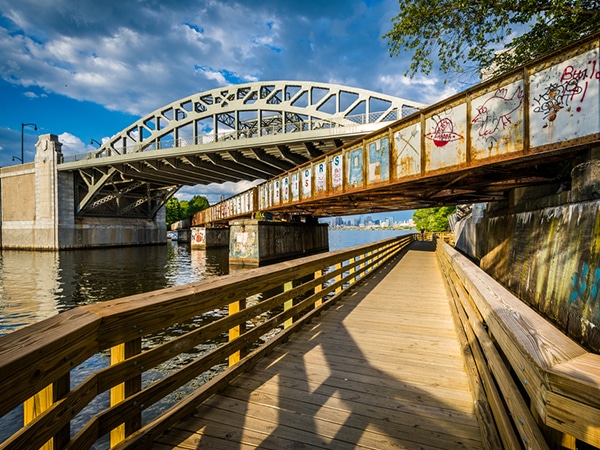
Charles River Walk
This Boston walking tour takes in one of the most scenic features in Boston - the Charles River. Walking alongside…
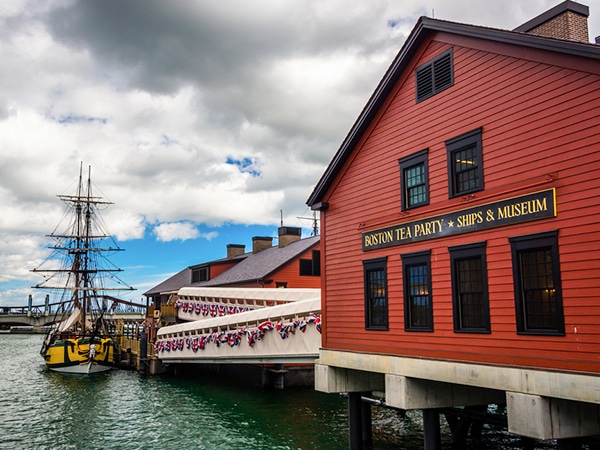
Financial District to Theatre District
This Boston walking tour will allow you to explore the waterfront and Boston’s Financial District. Don’t let the name confuse…

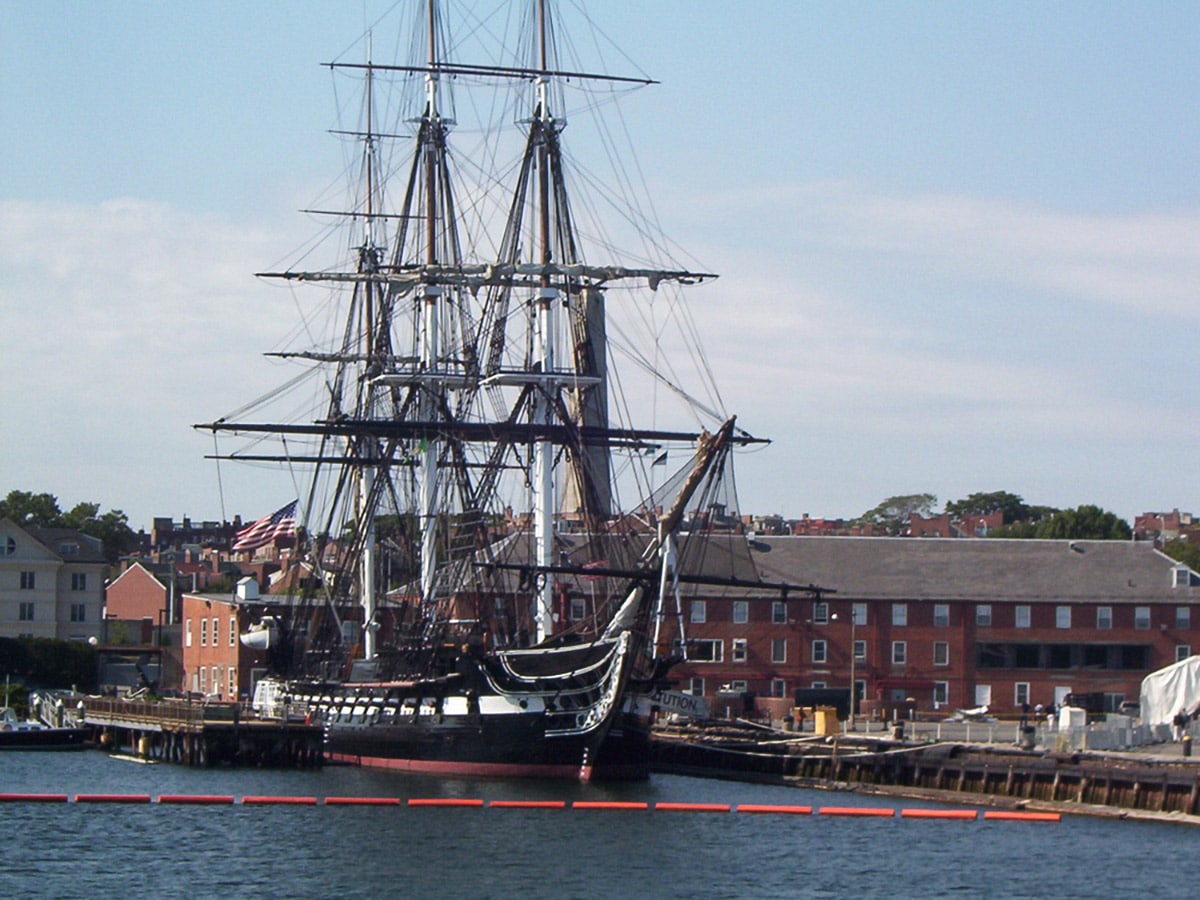


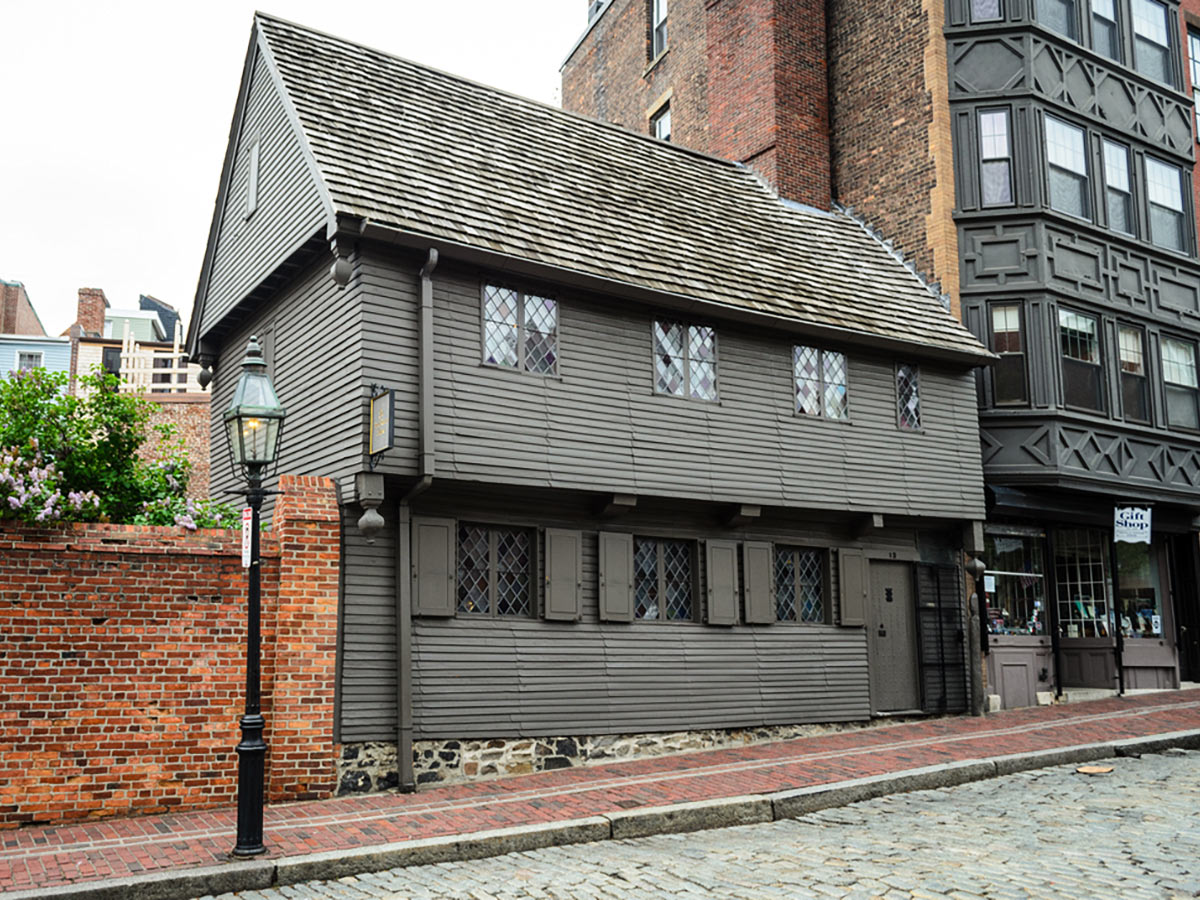
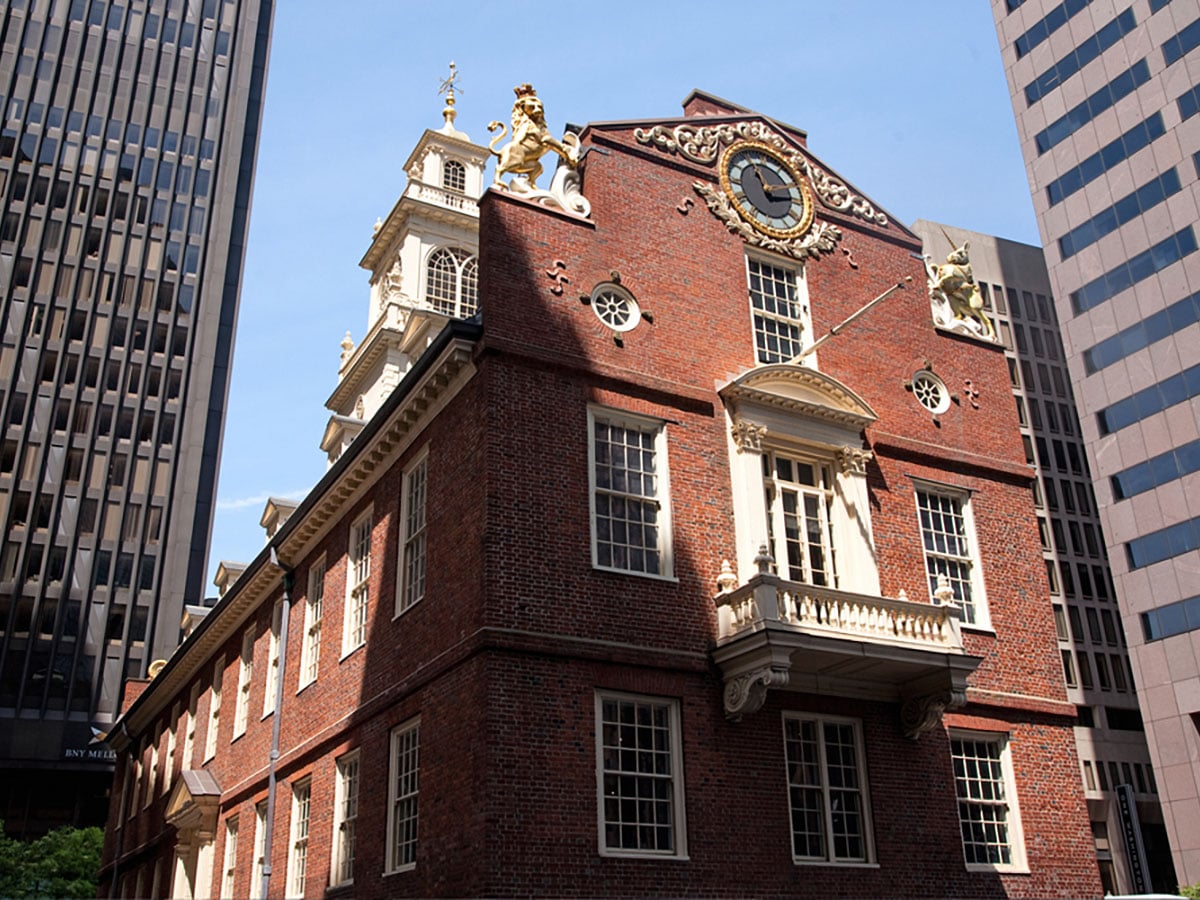
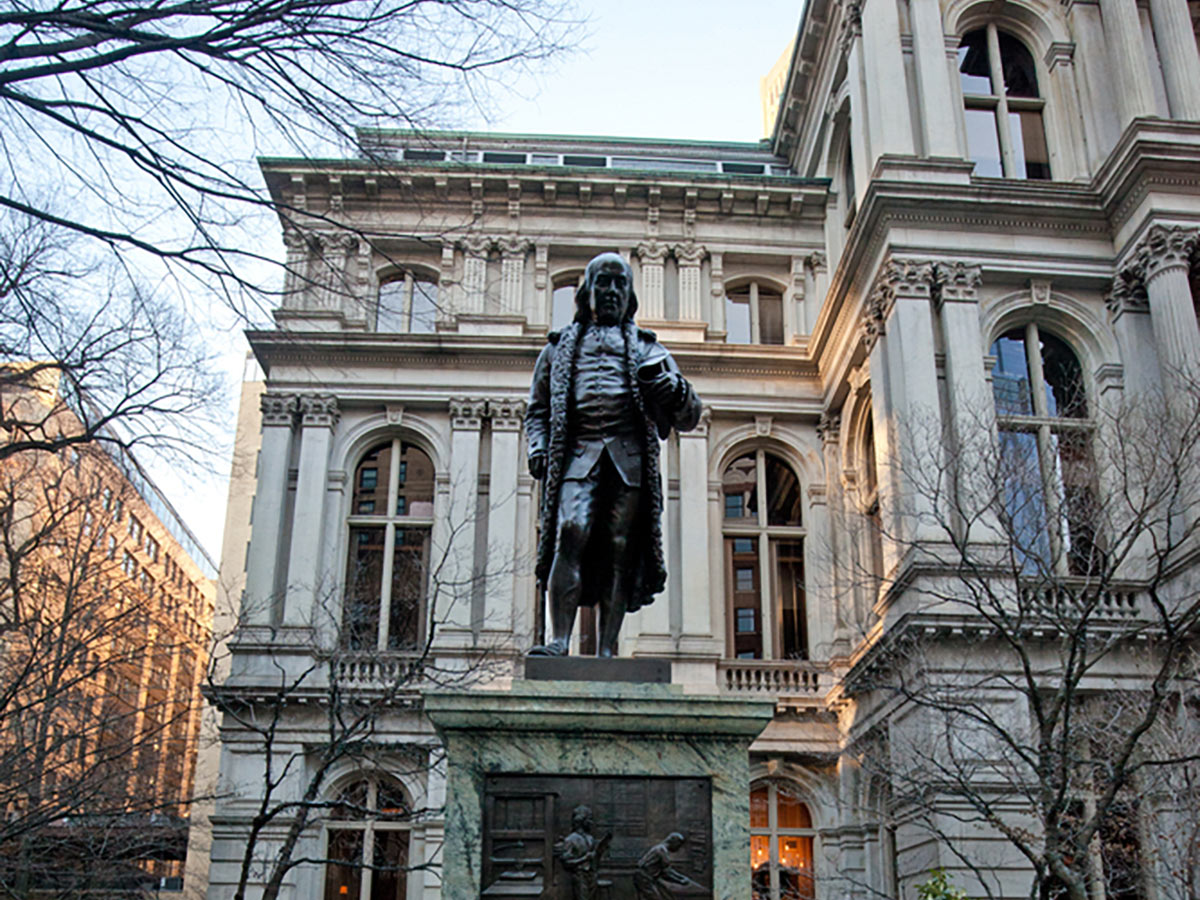
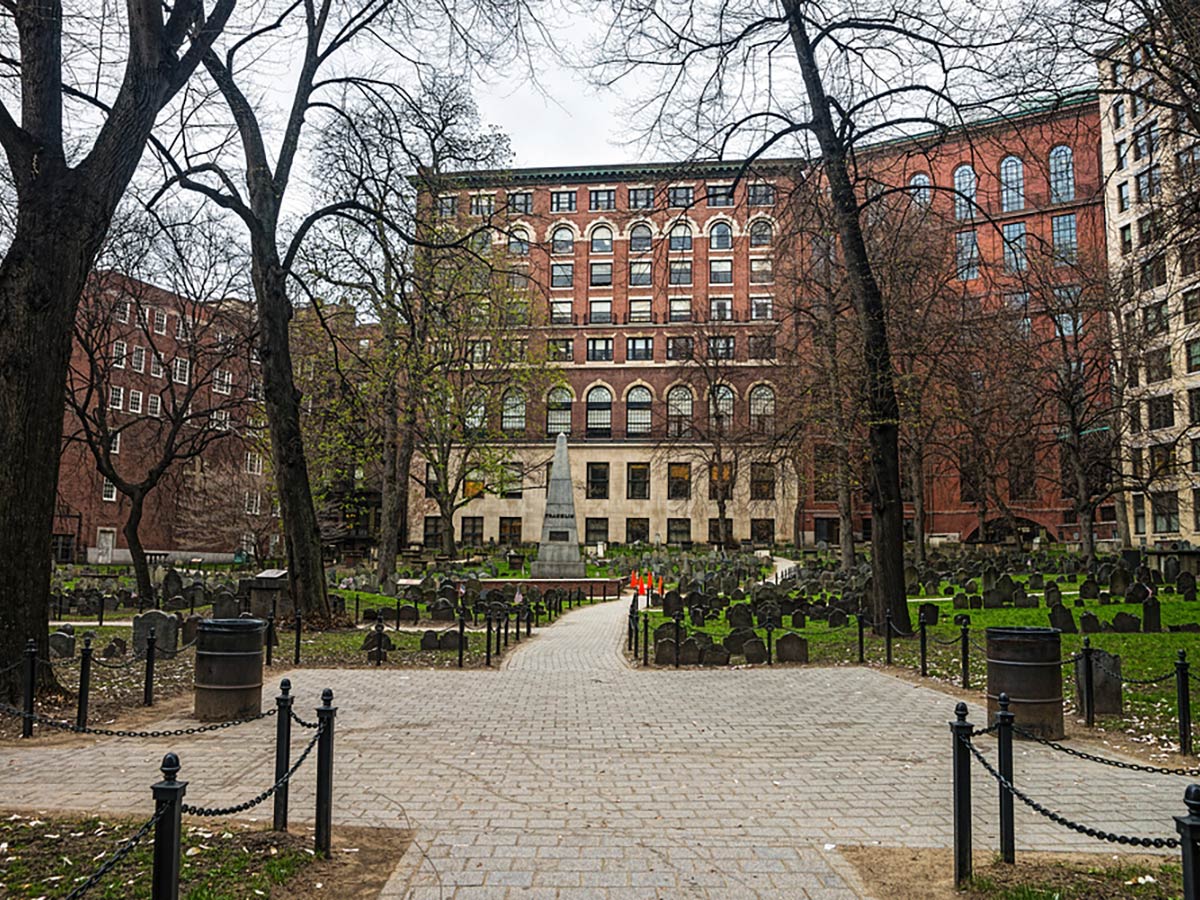
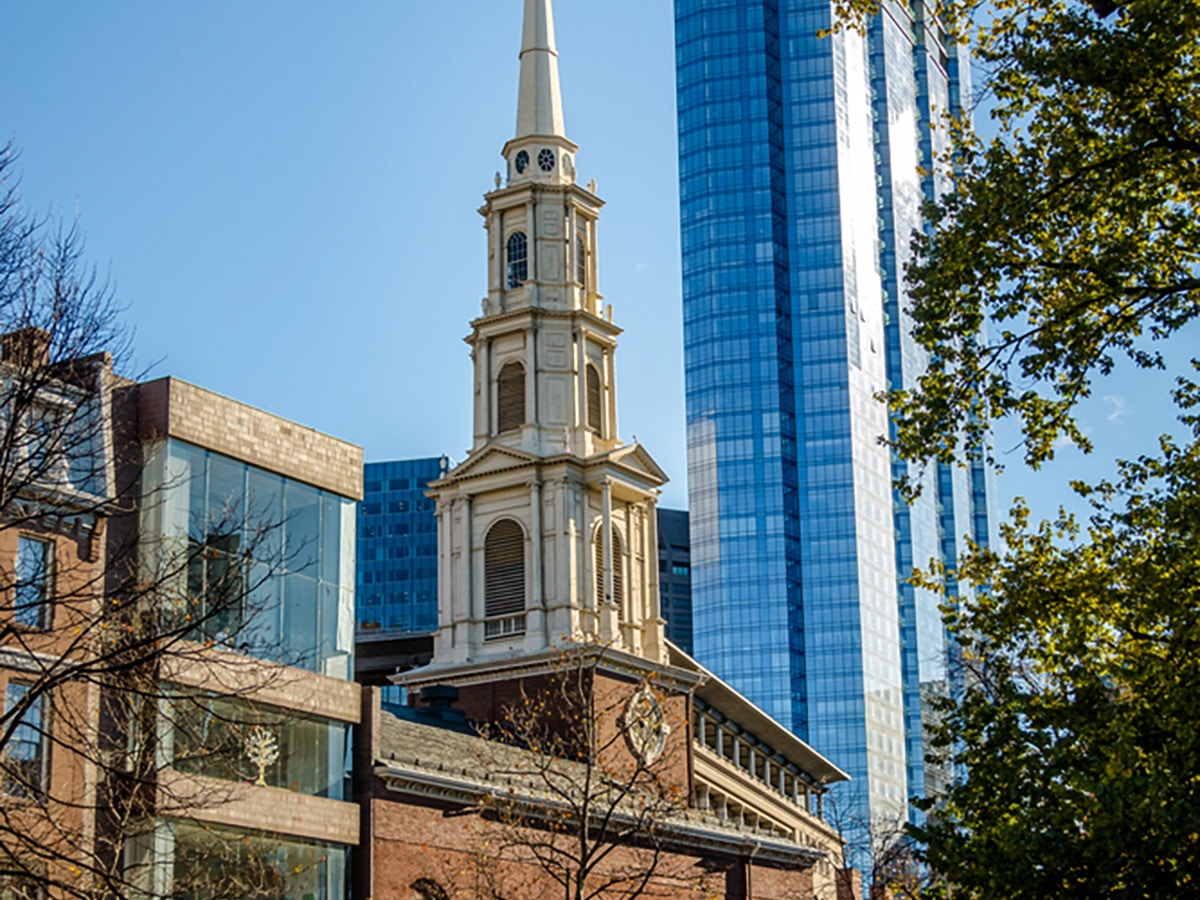
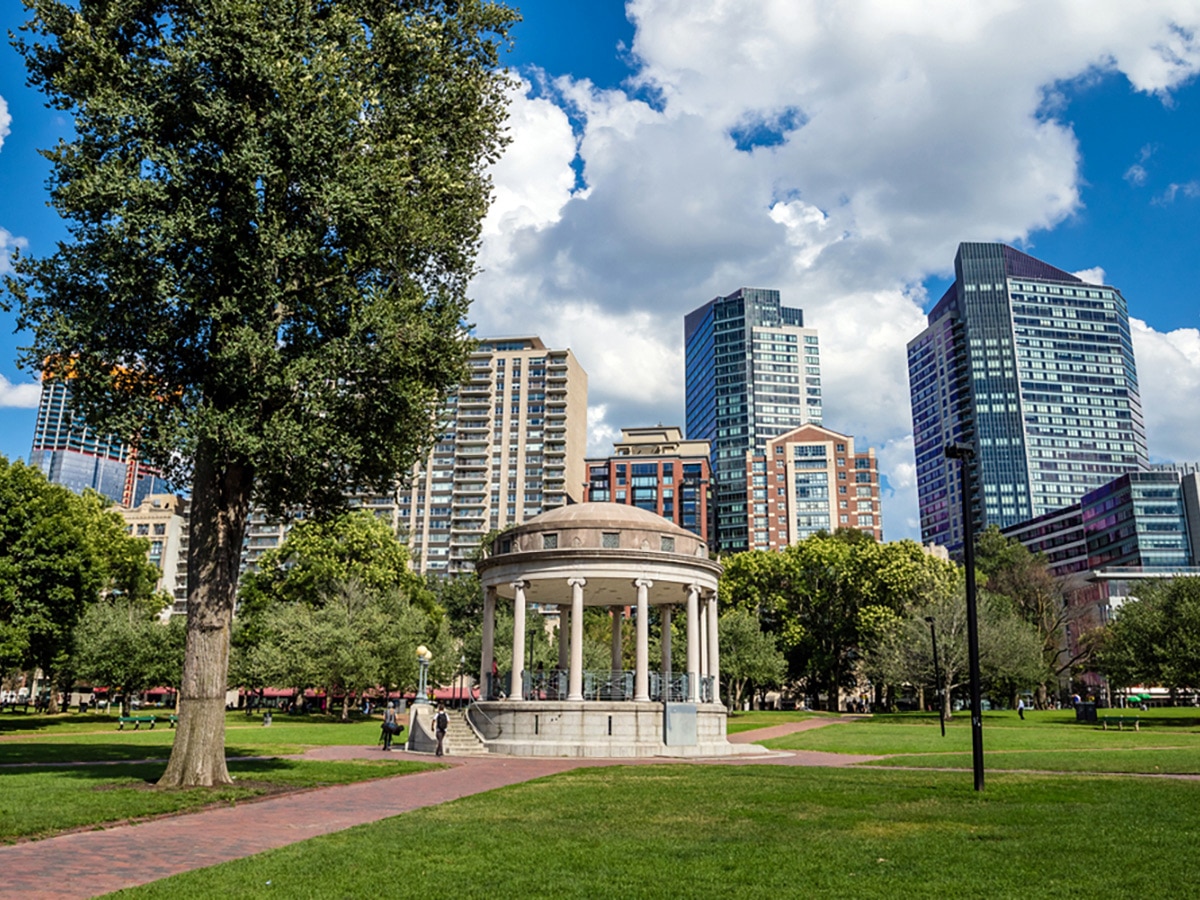



Antonia G. 6 years ago
Lots of history and great photo spots. A glimpse of history through this trail. Highly recommended.
breezylove 6 years ago
Simply beautiful! I adore all the lovely spots.
Whitney Penn 6 years ago
If you are going to Boston you should definitely walk the Freedom Trail. It’s pretty easy to guide yourself. It also provides a chance to see other parts of Boston you may not normally get to see.
Eva Lorenz 6 years ago
A lot of stopping and side trips around the area. Make sure you have a map or an app and take your time.